
Who doesn’t know about Java today? You can hear its mention in every nook and corner of the world. A significant majority of IT companies provide Java-based applications, while businesses are still driven to secure java applications due to robustness and stringent security facilities. However, Java frameworks are a matter of chaos for a variety of business owners that want their application to be standout.
The fact is that there is no dearth of java frameworks that makes application development simple and efficient. However, a number of people have a query regarding the selection of java framework on the basis of features, ease-of-use, cost, and many more. Businesses hire programmers in India, though they stay confused on which platform they want their app to be created.
While digital adoption is on the peak in the world, business owners & software developers both are eager to know which framework is best for the development of their web application. Indeed, this dilemma is obvious in 2020 while there are hundreds of technologies and frameworks available to ease down application development hassle.
Therefore, I and my developers at our software outsourcing company have decided to jot out some Java frameworks that are very popular and you can pick one of them in 2020 for application development. So, here glean a complete insight about them.
Top 18 Java Frameworks In 2020
Presently, several Java frameworks are being used by developers. However, there are some that being used more frequently. In those, Spring is the apple of eyes and captures almost 30% of complete market usage. While others such as JSF, Struts, and GWT are struggling to beat each other. If you want to hire Java programmers, you need to have comprehensive understanding of frameworks to pick for development. Here are the usage statistics of some of the top java frameworks.

Spring MVC
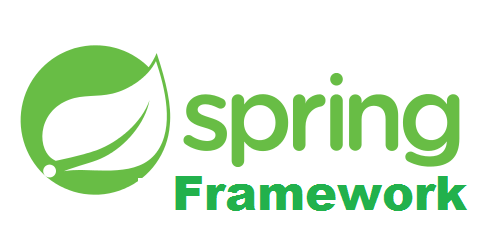
Spring is one of the most popular web Java frameworks. A majority of developers are using this platform today. Since its arrival in the market in 2002, this framework has captured almost complete Java development space.
Among businesses and developers, it is a matter of attraction because of its property of being lightweight for application development. Here are some of the features that make it an incredible platform for web application development.
POJO is a special aspect of this framework. Due to POJO implementation, there is no need to inherit or implement any interface while writing code. This makes this platform incredibly lightweight and simple.
Spring enables Aspect-Oriented programming allows cross-cutting such as logging and security and brings out the focused business logic.
Spring is a complete container that enables designing and manages the lifecycle and configurations of the application.
It also includes a robust transaction management API that provides the unification of all the transaction APIs.
Another great feature is dependency injection which means it enables the development of loosely coupled applications. Thus, it is easy to perform unit testing of loosely coupled applications.
Moreover, it is easy to integrate this framework with others.
Spark

Apache spark has grown exponentially in the market within very less time. It was released in 2014, and now it has become part of hundreds of applications development processes. Its lightning-fast speed and a robust in-memory data processing engine is the major aspect for the boosting of its popularity in the market. In the space of data analytics, it is very popular and greatly used.
Spark provides a swift processing speed of almost 100x faster in memory and 10x faster on this. Its dynamic nature is also a major aspect that induces 80 high-level operators. It makes parallel application development easy.
This Java framework allows the reuse of code for batch-processing, run ad-hoc queries on stream state and joining of the stream against historical data.
Spark has stringent fault tolerance features named spark abstraction-RDD. It is specially designed to handle the failure of any working node in the cluster.
This framework comes with dedicated tools for streamlining data, which makes it a perfect tool for data analysis.
Hibernate

Hibernate is the second most popular platform Java web framework that makes Java web application development easy. This is a free, open-source object-relational mapping library, designed for making Java to map objects to RDBMS. Another purpose of its creation was to implement the object-oriented programming concepts in a relational database.
Hibernate greatly support mapping both Object and Relational. While this also includes polymorphic, bi-directional association and association filtering. Moreover, it also offers XML mapping documents.
This framework introduces its own object-oriented query languages viz minimal object-oriented hibernate query language (HQL).
There is no bytecode processing therefore it offers complete transparency.
Its most appreciated features include automatic Dirty checking, Detached object, tougher concept of composite keys and primary key auto-generation.
Struts

Struts is a robust open-source Java web framework that enables the creation of intuitive and faster applications. It is based on MVC model and extends JSP API. Currently, this is the third most used framework. It bears several incredible functionalities that make it a perfect tool for Java application development.
Struts separate the presentation logic from business logic and make configuration centralized. It means the Struts_config.xml contains all information about your web application in an organized and concise way.
Changing the application database is very easy as you need to change only action class.
Struts enables easy debugging and modifications for the code developed by the designer.
Moreover, struts has a simple user-interface that enables developers to create web applications in simple clicks and minimal coding. It is open-source, thus it is possible to create or add your own functions.
It is a complete suite with MVC features, servlet, JSP, Hibernate that make this tool very realistic and efficient.
GWT
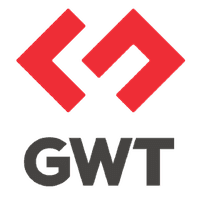
GWT stands for Google web toolkit. It has been introduced by Google years ago in 2006. However, due to some deficiencies, it didn’t get enough traction. Though, now it is getting quite popular among developers due to the introduction of new features and bug removal.
Here are some perks of using this toolkit for web development.
GWT enables you to use a single code base for both client and server.
It enables you to use great development tools such as refactoring, code navigation and more via Eclipse. Thus, GWT embraced Java anonymously as the source language.
This java framework is very quick. The server and client get reloaded quickly right after changes, to see the reflected outcome.
GWT implements dnd support that enables complete drag and drops functionality for the developers’ ease.
It has a Smart GWT — a wrapper that handles SmartClient JavaScript client. While another extendable feature is GWT Mosaic to create graphic-rich applications.
JSF
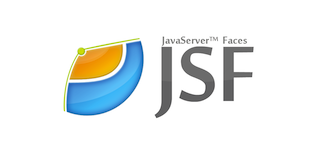
JSF stands for Java Server Faces, which is an application development framework based on Java. It was released in November 2018 and has earned a great reputation in the market. It is supported by Oracle and provides MVC based development. This platform includes rich libraries and tools that can simplify most complex application development.
Being a component-based Java framework, it offers an inbuilt component to create web applications.
It has facelets, which is a default view handler technology for JSF. Facelets support for all UI components of JFS and ensures to create a complete view for JSF application.
JSF includes expression language that establishes a communication channel between application logic and user interface.
JSF supports internationalization for creating a world-class application. Moreover, its rich set of inbuilt tools makes application creation swift and simple.
Grails

Grails is an open-source Java web application framework based on Groovy. If you are thinking about what is Groovy then you should know that it is an object-oriented programming language that focuses on enhancing developers’ productivity. This platform has been used by several big enterprises such as LinkedIn, Walmart, ESPN, and more.
Grails is an efficient tool and works perfectly with almost every Java development kit. It offers
Several perks such as:
- It has GORM that offers a handy and flexible layer over non-relational Data sources such as Hibernate.
- It is very easy for Java developers to start using Grails due to a simple and interactive user interface.
- With Grails, prototyping is very easy as it has scaffolding utilities. Moreover, it is also easy to build admin interfaces.
- Grails supports tons of plugins provided by the community of core developers. Moreover, you can also integrate existing framework or API.
Dropwizard

Its name is synonymous for its functionalities- wizard. This is really a light-weight framework that allows you to complete your application development at a very fast speed. This platform has incredible support for advanced configurations, application metrics, loggings, and much more.
This framework is incredible as it brings a host of libraries like Jersey, Guava, Jetty, Jackson, and Metrics. All of these libraries in one framework enable you to create light-weight and lean application.
It is easy to set up this framework with Eclipse IDE and create a simple project.
Using this framework, you can do prototyping rapidly.
Blade

Blade is a lightweight and high-performance framework with a full-stack web development tool kit. Being an MVC framework, it offers a restful routing interface, keeps web API cleaner and comprehensible. It provides several benefits such as:
- It helps developers to be productive, self-contained, intuitive and super fast.
- This java framework is wonderful and can be used to build small MNC applications more easily.
- It supports plug-in extensions and web jar resources.
- This framework also possesses CSRF -Cross-Site Request Forgery and XSS-Cross site scripting for defense support.
Play

Play is a unique framework that enables a highly productive workflow and maintains higher scalability. Being an MVC-based framework, it has been written in Scala and can be used through other programming languages, later the code can be compiled to Java-Bytecode. This wonderful framework also allows you to create play web application in Scala.
This platform is based on asynchronous processing therefore you can achieve high performance.
It allows you to use the statically-typed language. It means you find the errors at compile time and can get rid of a number of mistakes in the early life-cycle development.
In Play2, sbt system has been release that simplifies the integration of the Maven project and the creation of simple JAR files.
In this system, an extensive relational database access libraries are in-built for common functionalities.
Vaadin

Vaadin is one of the most prevalent and well-known open-source frameworks for web development. It is an incredible application platform with a set of web components, a Java web framework and many other tools. It has been very famous due to the ease of development process and many other features.
This platform allows server-side programming, it means now you don’t need markup language to create a webpage. It also offers all kinds of support via Google Web toolkit.
It is a completely object-oriented and Java-based framework. Thus, it is an ideal platform for web development.
To use this application platform, there is no need of extra qualifications or skills. Moreover, it provides plug-in support for web frameworks.
It offers many layouts, components, and different listeners in comparison to any conventional technology.
PrimeFaces

Primefaces is a Java-based open-source UI component library for creating JavaServer Faces-based applications. A Turkish company PrimeTek Informatics created this framework to make Java development easy.
This platform offers more than 100 UI components to create an interactive interface for JSF applications. Its toolkit includes HtmlEditor, AutoComplete, Dialog, Signature etc.
Another special characteristic of this platform is built-in Ajax support. Ajax components such as listener, counter, event, poll etc make application development easy.
Prime Faces provides push support by offering an Atmosphere framework, which is the most popular asynchronous application development framework for Java.
This Java framework provides client-side validations and Dialogue support that makes development more convenient and intuitive.
ATG
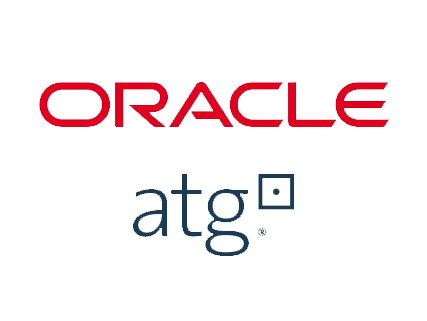
ATG is a Java-based web commerce platform owned by Oracle. It implements a component development model based on JSP and Java Beans. The core of this framework is Dynamo Application Framework. It supports both B2C and B2B applications, basically complex and huge in nature. However, it can be costly for small scale applications.
ATG has standard classes for all the common functionalities and even you can create custom Java code and assemble component beans and link them through configuration files.
It also has a personalized module that allows you to customize content for each user dynamically. Moreover, this module enables you to maintain and control user-profiles and business rules to keep the complete authority of content visualization.
This is a vast platform and requires expertise to handle every work. Moreover, big companies like Macy’s, Walmart, BestBuy, ASDA and others have used it for creating their website.
Wicket

A number of applications have been shifted to wicket due to various convenience and reasons. Wicket is a simple application development framework with a component-oriented structure. To use this application platform you just need to know HTMl and JAVA. It offers several benefits to users.
POJO is the main feature of this platform, where all components are simple Java object based on OOPS features.
It is a light-weight and helps you create applications swiftly. Moreover, it is very simple to unit test code written in Wicket.
Wicket supports almost every HTML feature such as forms, links, tags and more for your web application.
Wicket converters are useful. They allow models to be updated frequently. While ordinary conversions are built-in, one can write a new converter with ease.
Apache Hadoop

It is a bundle of different open-source software utilities and solely designed for distributed storage and processing of humongous data sets across clusters of computers. In short, it is an open-source framework that uses a network of several computers for solving problems related to huge data.
It offers HDFS (Hadoop Distributed File System) which is the basis for component storage. It breaks files into chunks and spread them throughout the network of nodes.
It is based completely based on OOPS and streamlines development. Moreover, it enables parallel processing.
Vert.X

It is an event-driven application framework developed by Eclipse that uses several languages such as Groovy, Java, Scala, JS, and more. Asynchronous programming is the basic model of the framework thus you can create non-blocking applications, free from multi-threading.
Verticle is one of the main concepts of Vert.x that comprise event loops such as messages, network buffers, HTTP request and more.
While event bus is the second and last main concept that comprises communication of verticles. An event bus establishes communication among different verticles. It makes message passing easier.
Its non-blocking nature is its UPS which makes web applications greatly performant.
This framework is preferable for small, medium and large scale applications.
Jersey
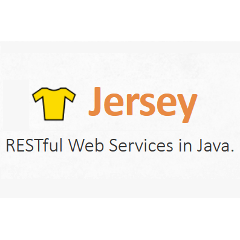
Though Jersey is not a popular framework but considered as one of the robust platforms. Being a web services framework, it enables the creation of RESTful services and supports JAX-RS APIs.
Jersey offers a sort abstraction layer that makes development easier for developers and they don’t need to worry about the inadequate implementation of the client-server communication.
Another incredible feature of Jersey is Chunked output, it means a server can send a response back to clients in the form of chunks. In short, it makes easier to send large data chunks throughout the response.
It's the easy testing infrastructure is another USP that enables you to prepare lightweight integration tests. Moreover, you can easily integrate tests with the Maven environment.
OSGi

Open Service Gateway initiative is a system based on components. In this Java framework, every component is known as a bundle, where every bundle has an independent lifecycle. Being a Java-based framework for creating and deploying web and software programs.
In this framework, majorly jar files can be considered as bundles that need to explicitly declare the package they want to use.
To bind bundles as services, bundles use the JVM-level service registry.
Though there are numbers of Java web frameworks, you need to opt for the best platform to secure a rich and successful application. A number of collection frameworks in Java are known for great performance and ease of development. If you are looking for a Java reliable framework to build your application then you can pick any of these. Moreover, there is no dearth of Java development companies, you need to pick a reliable partner that can understand and implement your application idea precisely.